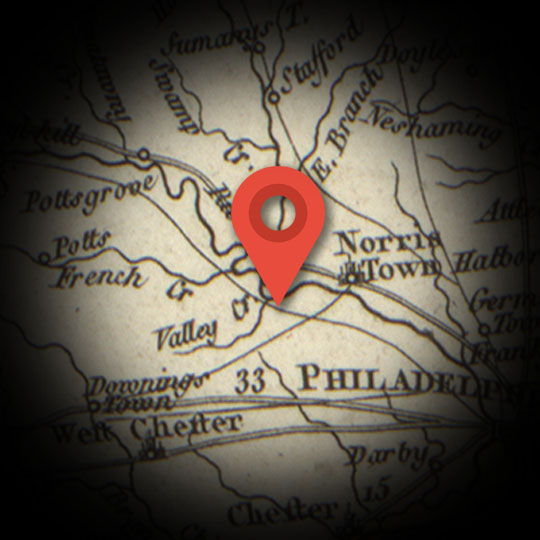VALLEY FORGE
Explore
The place-name of Valley Forge is absolutely synonymous in the American psyche with visions of starvation, frostbite, illness, and suffering.
The winter of 1777-1778 is likewise remembered as the low water mark both in terms of morale and in terms of successful prospects for the American independence movement. The British, who had already been in control of New York City since the summer of 1776, had also taken possession of Philadelphia—placing a severe strain on General George Washington’s ability to project himself as a competent commander-in-chief.
Given the undeveloped state of roads and the intensity of northeastern winters, wartime action was typically reserved for warmer weather— when the distances between settlements could be passed without too grave a threat of snow and/or mud.
It was the practice, then, of the armies to go into “winter quarters” to train and survive to fight again in the spring.
Washington chose Valley Forge, about 18 miles northwest of Philadelphia, as a compromise line between being too close to, and too far from, Philadelphia.
Soldiers were ordered to construct their own huts from local timber. More than a thousand of these were built. As large as that number of huts may sound, however, they had to accommodate more than 12,000 soldiers and camp followers.
As cold weather set in with a vengeance, the American forces were hard pressed to ration and supply themselves. As a result, at least a thousand soldiers died. Smallpox, influenza, typhoid, and dysentery contributed to that number.
Hamilton’s writing from this time is full of bitterness of the incompetency and lack of dedication on the part of the Continental Congress and even elements of the army whose uniform he himself wore. He described Congress’s conduct as “feeble, indecisive, and improvident.”
These disappointments with government inactiom would ultimately shape Hamilton into a proponent of a stronger, more central government—equal to the realistic needs faced by a people in an age of growing social and technological sophistication.

TIME FRAME:
1777-1778